Rice ‘flashes’ new 2D materials
2D compound shows unique versatility

Rice chemist, alums named to Forbes 30 Under 30
Rice University chemist Julian West and four alumni have been named to the 10th annual Forbes 30 Under 30.
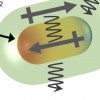
‘Soft’ nanoparticles give plasmons new potential
Bigger is not always better, but here’s something that starts small and gets better as it gets bigger.
Weak force has strong impact on nanosheets
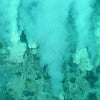
Vitamin boosts essential synthetic chemistry
Inspired by light-sensing bacteria that thrive near hot oceanic vents, synthetic chemists use vitamin B12 to catalyze valuable hydrocarbons known as olefins, or alkenes, useful precursor molecules for the manufacture of drugs and agrochemicals.

People, papers and presentations Dec 7,2020
Richard Baraniuk, the Victor E. Cameron Professor of Electrical and Computer Engineering and a professor of computer science, is co-author of the introduction to “The Science of Deep Learning,” a special issue of the Proceedings of the National Academy of Sciences.
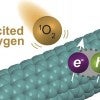
Chemists get peek at novel fluorescence
Rice chemists find a second level of fluorescence in single-walled carbon nanotubes. The phenomenon may be useful in solar energy and optoelectronic applications.
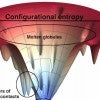
Understanding frustration could lead to better drugs
Atom-scale models of proteins that incorporate ligands, like drug molecules, show a strong correlation between minimally frustrated binding sites and drug specificity. Such models could lead to better-designed drugs with fewer side effects.
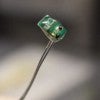
Rice researchers top two categories in ‘Create the Future’ contest
Rice University was a double winner in the annual Create the Future Design Contest, an international competition in its 19th year.
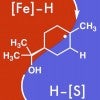
In a hurry to develop drugs? Here’s your cHAT
Rice University scientists develop cHAT to simplify the reduction of alkenes to more useful intermediate molecules for drugs and other useful chemical compounds.

Flash graphene rocks strategy for plastic waste
Rice scientists advance their technique to make graphene from waste with a focus on plastic.

Rice finds path to nanodiamond from graphene
Rice University researchers expand their theory on converting graphene into 2D diamond, or diamane.
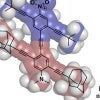
Rice rolls out next-gen nanocars
Rice researchers continue to advance the science of single-molecule machines with a new lineup of nanocars, in anticipation of the next international Nanocar Race in 2022.
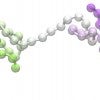
At our cores, we’re all strengthened by ‘dumbbells’
Scientists at Rice’s Center for Theoretical Biological Physics detail the structure of dumbbell-like sequences in DNA during interphase that suggest several unseen aspects of chromosome configuration and function.
